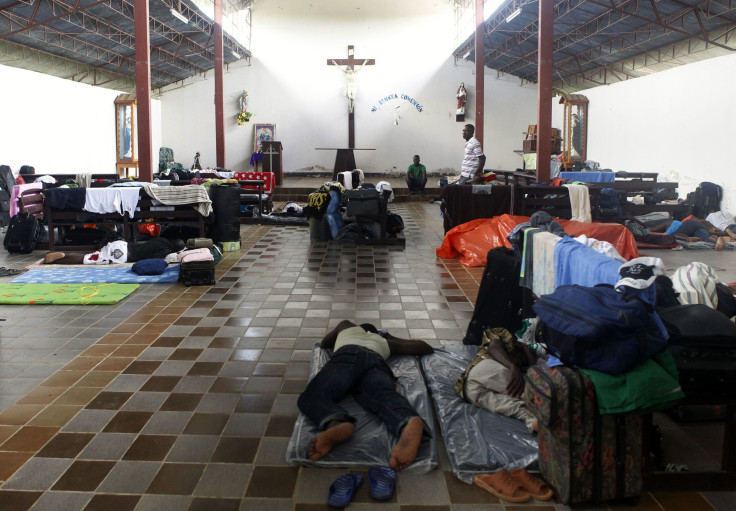Haitian Migrants Fill Shelters In Brazil's Border Towns

Five years after Haiti’s devastating earthquake, Haitian emigrants are still taking long, arduous journeys to find better lives outside the country. And migrant shelters are filling up not just in Miami or Puerto Rico – but in the border towns and cities of Brazil.
In the northwest state of Acre, migrants arrive by the busload every day with hopes of finding permanent homes and stable jobs in the country. The main shelter in Acre, with a capacity of 200, is currently housing around 1,000 migrants, according to the chief prosecutor of the state’s Public Ministry of Labor. This week he filed a request for Brazil’s federal government to take on some of the financial support for migrants in the shelter and transport out of Acre to Brazil’s major cities.
“We have a humanitarian disaster situation with immigrants entering Brazilian territory in search of jobs through Acre’s border,” he said, according to news agency Efe. “The Brazilian government hasn’t taken any steps to solve this migrant crisis.”
According to Acre’s governor, Tião Viana, the state has received more than 6,000 Haitian immigrants in 2015 alone. In recent weeks the state began sending dozens of migrants by bus to São Paulo, one of Brazil’s largest cities, irritating local officials who said they weren’t informed in advance. Those trips were suspended last week to allow the governments to work out a new transportation arrangement.
Haitians began looking to Brazil as a migration destination after a magnitude-7.0 earthquake killed an estimated 230,000 people and left another 1.5 million people without homes in 2010. Brazil already had troops deployed in Haiti as part of the United Nations Stabilization Mission in Haiti, and through them Haitians began to learn about employment and living opportunities to the south. Demand for workers also grew as Brazil prepared to host the 2014 World Cup. More than 35,000 Haitian immigrants have ended up in Brazil over the past five years, according to Acre government statistics.
It’s a long journey to Brazil. According to a report by the International Organization for Migration, migrants take a plane to Ecuador or Peru, then cross hundreds of miles on land to the Brazilian border town of Brasiléia, in Acre.
For some, the trip can be even more convoluted. Viana told the Rio Times a common route also involved a bus ride to the Dominican Republic, then a flight to Panama, another flight to Ecuador, a land crossover to Peru, and then the trek to Brazil’s border.
Nevertheless, Brazil has proved attractive for Haitians, particularly given its relatively open immigration policies. In 2012 officials created a humanitarian visa for Haitian immigrants in Brazil, and lifted the cap on those visas in 2013. Since then, Brazil has issued more than 15,000 humanitarian visas in Haiti, and more than 4,700 in consulates in Ecuador and Peru, reported Brazil’s Folha de São Paulo newspaper. But the long wait to obtain a visa has still fueled illegal migration, which prompted the government last week to announce it would increase the cap on permanent visas for Haitians to deter them from using criminal smuggling networks.
© Copyright IBTimes 2025. All rights reserved.






















